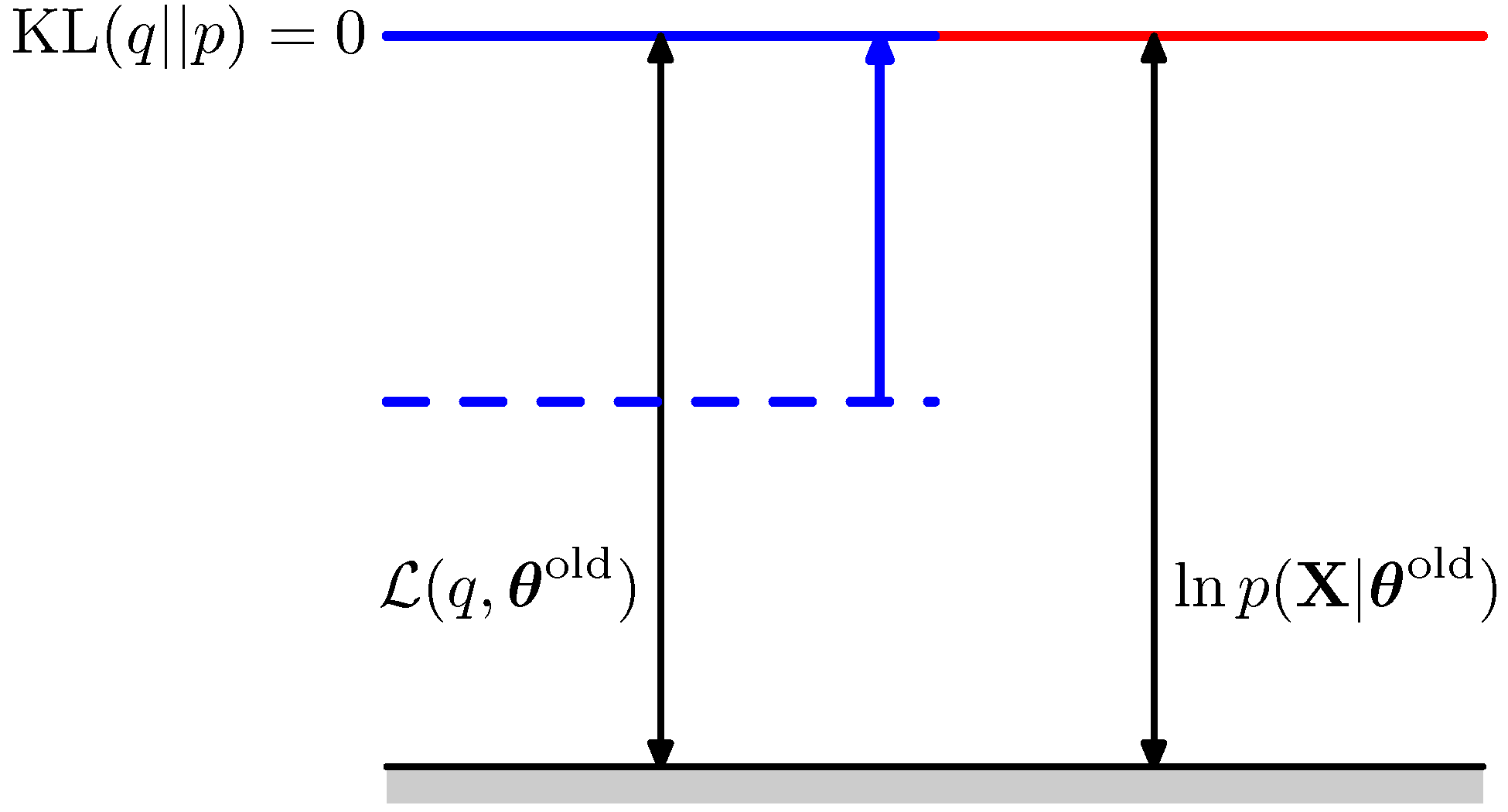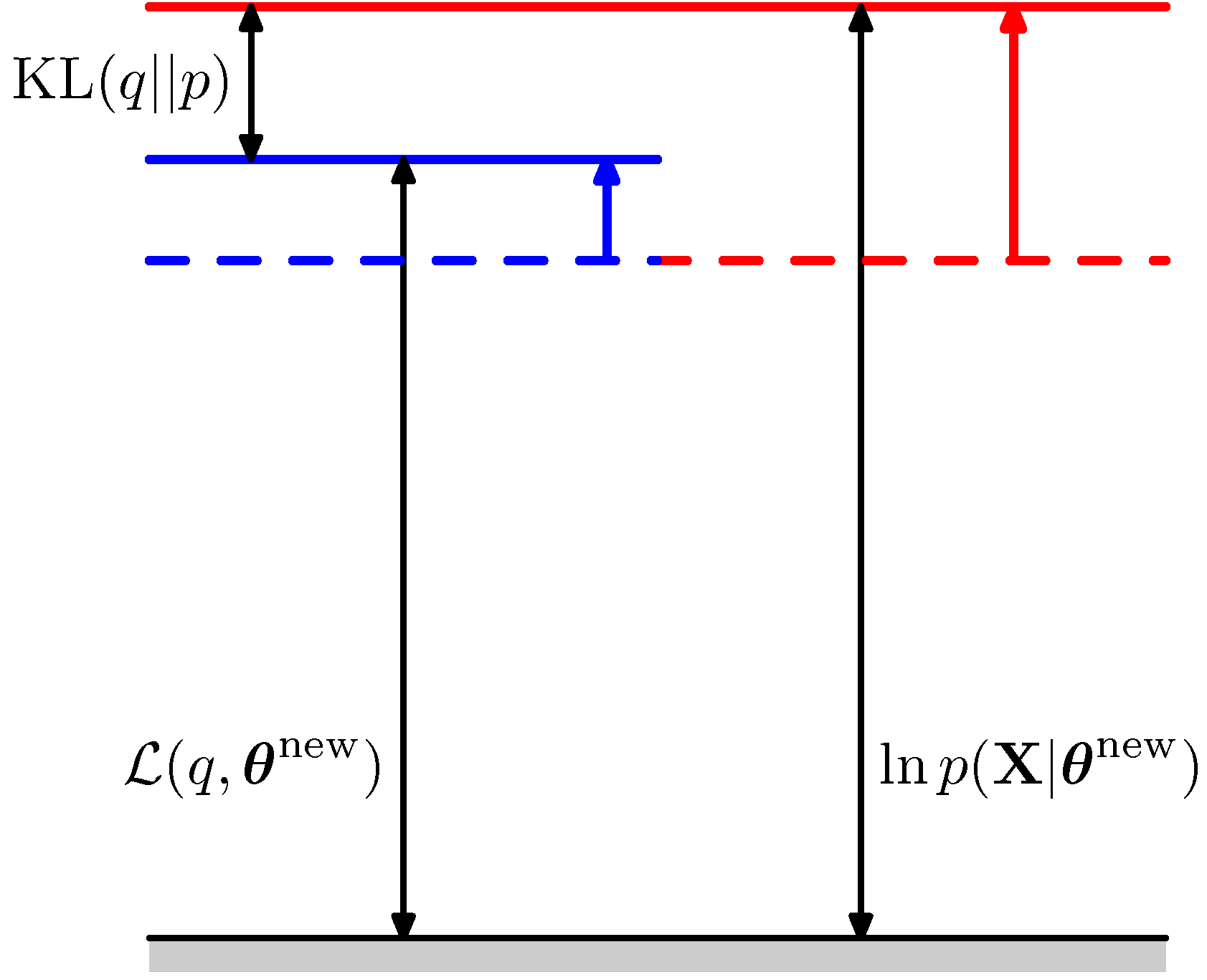3. EM Algorithm (2)
We have seen that EM algorithm consists of two parts.

https://stillbreeze.github.io/images/em.jpg
-
E-step : fix \(\theta\), maximize the lower bound with respect to \(q\)
-
M-step : fix \(q\), maximize the lower bound with respect to \(\theta\)
Let’s talk about each step more in detail.
(1) E-step (Expectation)
It tries to maximize the lower bound with respect to \(q\) ( while fixing \(\theta\) ). That is same as minimizing the “gap between lower bound and log likelihood”. The gap between these two can be expressed as a ‘KL-divergence’.
( use the same example(GMM with three mixtures) )
So, to maximize the lower bound, we minimize the KL-divergence. And to minimize the KL-divergence, we have to set \(q(t_i) = p(t_i = c \mid X_i,\theta)\)
(2) M-step (Maximization)
On M-step, we want to maximize this lower bound with respect to \(\theta\). It can be expressed as below.
( use the same example(GMM with three mixtures) )
As you can see, \(E_q\;log\;p(X,T\mid \theta)\) is (usually) a concave function with respect to theta, which is easy to optimize!
(3) Understanding EM-algorithm Visually
To write \(p\) in general form,
\(lnp(X|θ)=L(q,θ)+KL(q∥p)lnp(X|θ)=L(q,θ)+KL(q‖p)\)
E step
- Make \(KL(q\mid \mid p)\) = 0, that is , pull up the blue line up to the red line!
 </br>
</br>
M step
- fix \(q\) and find \(\theta^{new}\)
- that is, make the red line higher!
 </br>
</br>
Repeat this E & M step!
(4) Summary of EM algorithm
[1] method for training Latent Variable Models
[2] Handles missing data
[3] sequence of simple tasks instead of one hard task
[4] guarantees to converge ( local or global )
[5] helps with complicated parameter constraints
[6] E & M step
In E-step, we maximize the lower bound with respect to q, and in the M-step, we maximize the lower bound with respect to theta. The mathematical expression will be like the below.
